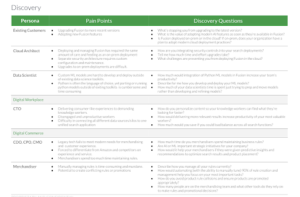
Software companies buy software!
It’s a truth universally acknowledged that the rise of Saas solutions has exploded the number of different software tools a company purchases. Unshackled from traditional IT constraints, anyone with a credit card can purchase a point solution that fits their department’s specific needs without worrying about standardizing on a company wide standard, or going through pesky reviews.
While this has certainly empowered departments to move quickly and leverage software solutions to address challenges, it has also led to companies buying many overlapping tools and implementing them with minimal integration into other company systems. In the GTM organization this often means marketing and sales teams leveraging different tools to accomplish similar outcomes, and even in the “sales” stack, tools are not considered as a holisticly leading to problems like:
- Multiple conflicting “sources of truth” making consistent reporting impossible
- Confusion over which tools to use for what, leading to either lack of adoption, or misadoption
- Limited or no integration adding friction to processes and destroying data integrity
- No “one throat to choke” when issues arise
Enablement as a focusing function
Because enablement’s primary goal is team effectiveness, it is critical that the enablement function is tightly partnered with the ops, systems and analytics team. Any successful long-term enablement strategy has to involve assessing the tool stack to ensure it’s right-sized for the team, working with ops to achieve the “art of the possible” in system configuration and ensuring the critical data is identified, located in the system of record and captured reliably to provide metrics on team effectiveness.
Common challenges to this approach arise when:
- Enablement is seen as a discrete function from systems, operations and analytics
- Marketing and Sales Ops are separate and there is no single owner of the GTM stack who can rationalize tools to ensure minimal overlap and maximum integration
- Analytics are considered after the fact and the team is constantly trying to reconstruct data that should have been captured in the past.



